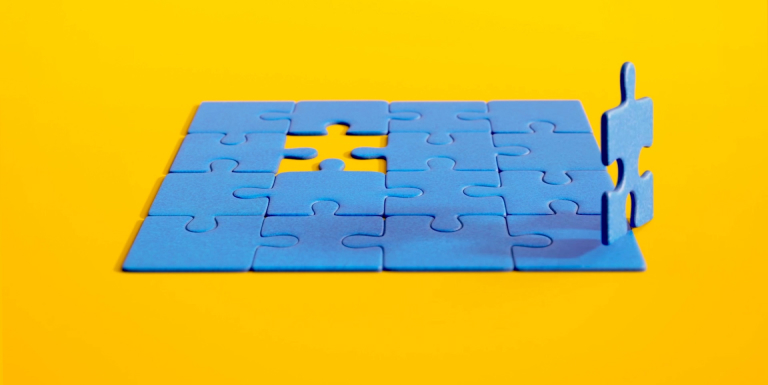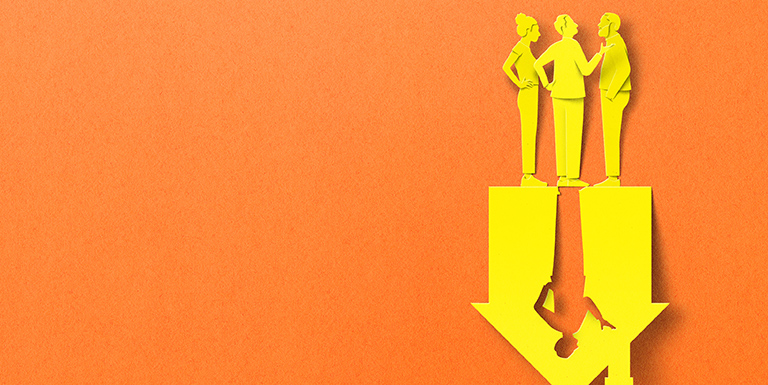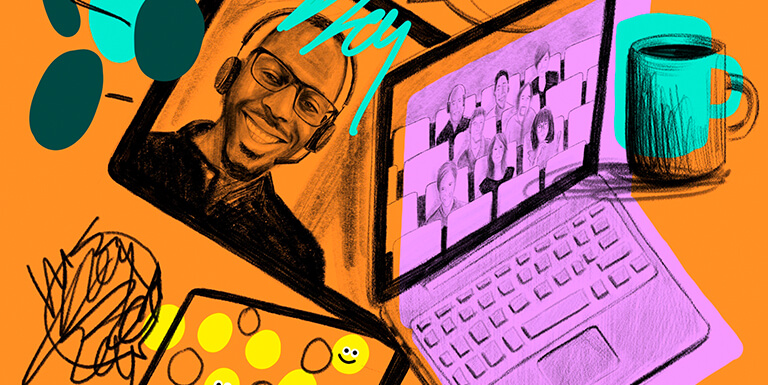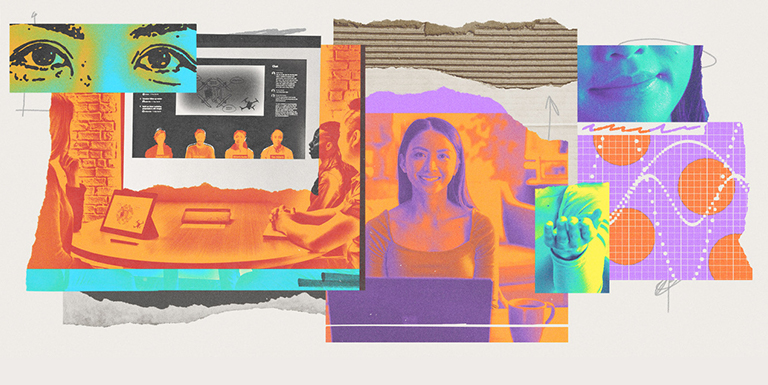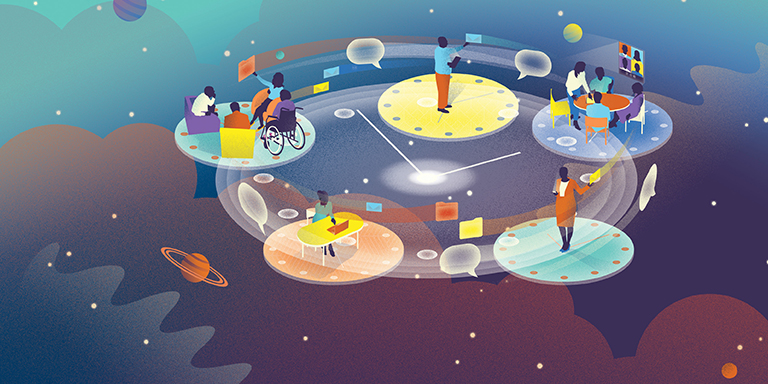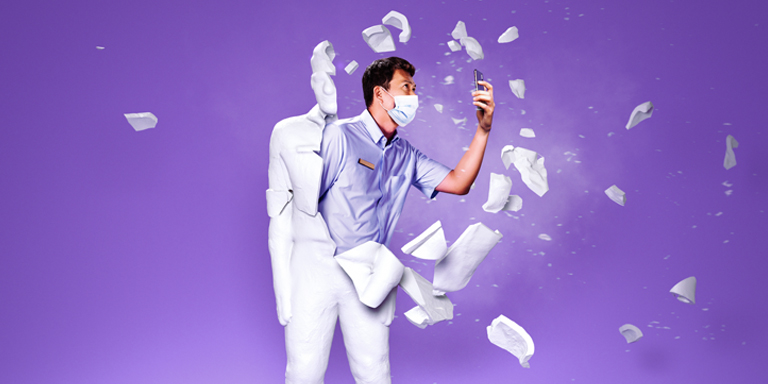
What a year it was for work! So much happened in the past 12 months: millions were still working from home , hybrid work became a new reality, and by the end of the year it was clear that we’re not going back to how things looked in January 2020. US workers found new jobs in record numbers—an astonishing 3 percent of the American labor force quit in September alone—and we even coined a phrase for all that shuffling. We saw a rise in digitization and automation, a boom in the creator economy, a renewed prioritization of wellbeing, and a total disruption of classic work patterns, including the idea of “9 to 5.”
All combined, this year brought a degree of change we haven’t seen before in our lifetimes, and it’s causing a fundamental rewiring of the economy as we know it. This feels like a good time to reflect on how things changed in 2021, and to take a look at what we can expect in 2022.
Explore the Themes
1. Shifting into High Gear
The Great Reshuffle puts nearly half the global workforce on the move
Office shutdowns, childcare disruptions, and all that time working from spare bedrooms and closets had a big chunk of the global labor force playing musical chairs this year. LinkedIn, which is part of Microsoft, dubbed this once-in-a-generation upheaval the Great Reshuffle. Forty-one percent of workers around the world considered leaving their employer in 2021, according to Microsoft’s 2021 Work Trend Index . Many of them actually made the leap. The U.S. Bureau of Labor Statistics reported that 4.4 million Americans left their jobs in September, establishing yet another new record after months of unprecedented exits.
Some changed jobs due to burnout or a lack of workplace flexibility. But for many, the pandemic provided time and space to prioritize and put things in perspective. “You have employees globally who are rethinking not just how they work, but why they work and what they most want to do with their careers and lives,” LinkedIn CEO Ryan Rolansky told Time . And while there may be increased volatility for a couple of years, he predicts that the reshuffling will ultimately make businesses more efficient and workers more fulfilled.
2. A Not-so-split Decision
Viewing work as either “in-person” or “remote” shifted to “yes, and…” with the Hybrid Paradox
Working from home is amazing! Also—working from home is the worst! Therein lies 2021’s most mind-bending career conundrum. Though the vast majority of employees say they want the freedom of remote work options to stick around, the exact same percentage say they want more in-person collaboration post-pandemic. Microsoft CEO Satya Nadella has a term for this split-screen perspective on work: the Hybrid Paradox.
“Hybrid work represents the biggest shift to how we work in our generation,” he wrote in May , and hundreds of millions of us can relate. We’ve gotten so comfortable joining Teams calls from the kitchen table and setting our own hours, yet we also crave quality collaborative time with our co-workers.
There’s no one-size-fits-all answer to making hybrid work actually work. Some employees are more productive at home. Others get more done in the office. Some do best by mixing things up. The way forward involves giving workers the flexibility to design the work schedule that works best for them and enables them to have the greatest impact, but without hampering their team’s ability to come together and collaborate effectively.
“You have employees globally who are rethinking not just how they work, but why they work and what they most want to do with their careers and lives.”
3. The Ties That Bond
Investing in social capital has never been so important
The year 2021 wasn’t easy on social connection, especially at work. Being together physically with our teams, bouncing ideas in hallways, networking at conferences—none of that was really in the cards this year. So we had to adapt. While many forms of socializing took a hit, figuring out our social capital has never been more critical. How do we make and keep lasting bonds with the people we work with? Can technology help reawaken dormant ties after months of remote work? How can managers help teams stay connected and engaged when they haven’t seen each other in nearly two years?
We learned this was a problem worth solving. Microsoft researchers found casual connections were more important than we initially thought. In a piece for Harvard Business Review , they declared that spontaneous, informal interactions “foster the employee connections that feed productivity and innovation—these interactions are the soil in which ideas grow.”
The solution? It’s relatively simple: be human. “The best leaders listen and show empathy, allocate more leadership time to team management and coaching, enable versus control, and invest more in building a culture that reaches out of the traditional office and into people’s homes,” the researchers wrote. Some might call that a culture of kindness.
4. “You’re on Mute”
Navigating the inevitable pitfalls of hybrid meetings
After a year of meeting in a remote or hybrid setting, we’ve seen just about every snafu. Technology alone cannot solve all of our communication woes when working apart. People both at home and in the office often found themselves unseen or unheard. According to Frost & Sullivan , of the nearly 90 million in-person meeting rooms worldwide, only 7.8 percent were video-enabled in the first year of the pandemic.
“The risk of hybrid meetings is that in-person attendees become anonymous faces in a room, while remote attendees are left speaking into a void, not knowing if they are seen or heard, or how to jump in and take a turn,” said Jaime Teevan, chief scientist at Microsoft.
Research to innovate meeting experiences is leading to new ways of working that feel more natural. Microsoft has developed setups for Teams that incorporate digital whiteboards, AI-powered cameras and speakers, and video feeds that position remote participants at eye level with those in person for greater connection—no matter where attendees are sitting.

Illustration by Nicolás Ortega
5. Customizing the Clock
Asynchronous collaboration allows us to set the pace on our own terms
This year brought about a rise in “asynchronous collaboration”—a way of working together that doesn’t require people to work at the same time.
Working together at different times wasn’t an entirely new concept. But the pandemic pushed people more rapidly to blend real-time meetings and calls with asynchronous tools (digital notes, recordings, and co-authored documents in the cloud, for instance) that everyone on a project could access at any time.
Have colleagues in India? Wake up to their sales report tomorrow morning in Seattle, or upload your presentation slides to them in a shared folder to keep the collaboration going. Managers who ensure that non-sensitive material is shared in a timely manner for anyone who missed a meeting in real time create a culture where employees can catch up quickly and not worry about negative consequences. “That allows us to say, ‘Hey, you really don’t have to be at this meeting,’ ”says Jeff Teper, corporate vice president of Microsoft 365 Collaboration. “That approach trickles down in the organization.”
Managers who ensure that non-sensitive material is shared in a timely manner for anyone who missed a meeting in real time create a culture where employees can catch up quickly and not worry about negative consequences.
6. The Winner by a Long Stretch
Flexibility is the year’s most bendable buzzword
Working from home? Excellent. Working from the beach? Even better. Want two days on, three days off, and two days in-person at your treadmill desk? Why not. After months of embracing eclectic pandemic work styles, employees in 2021 have been loud and clear: they want the flexibility to continue. Organizations are learning to bend, enabling employees to take what they need (compressed workweeks, job sharing, full-time remote… the list goes on). “Flexibility” is certainly the workplace word of the year.
Sixty-six percent of business decision-makers are considering redesigning physical spaces to better accommodate hybrid work environments, according to Microsoft’s 2021 Work Trend Index. Eighty-one percent of leaders are adjusting their policies to offer greater flexibility, including hybrid work, according to a LinkedIn survey. And job postings with “flexibility” in the description rose from 6.4 percent in 2016 to 20 percent in 2021, according to data from ZipRecruiter.
Job flexibility itself is getting more flexible, too. On the WorkLab podcast in October, Stanford economics professor Nicholas Bloom pointed out intriguing new ways to add flex time, like the 9/8/0-hour scheme that has employees working eight days of nine hours, one day of eight, with every other Friday off. Or work four days at 10 hours with three-day weekends. Of course, every organization will have a different definition of flexibility. It’s all about finding what works best for your people, business, and culture.
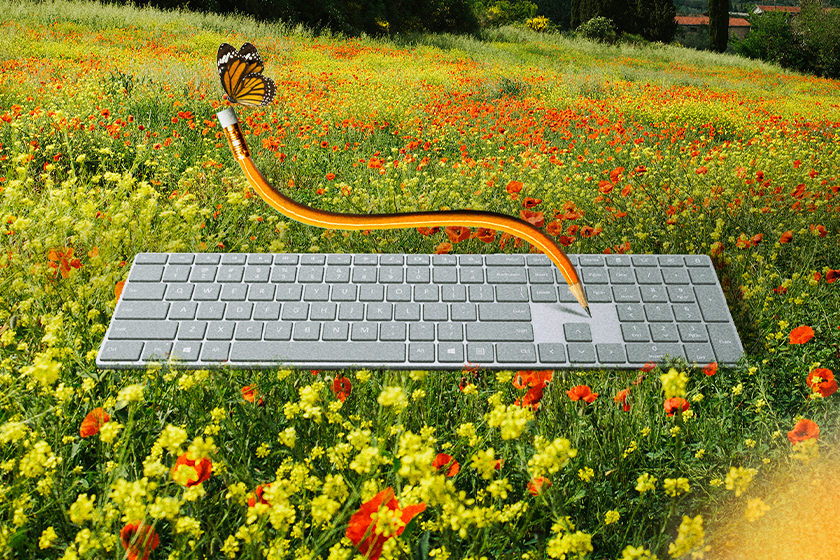
Illustration by Nicolás Ortega
7. The 25-minute Half-hour Meeting
More is not always better when it comes to getting together
With back-to-back-to-back video chats and relentless digital distractions, a few moments of peace can keep you focused and fired up—a quick yoga pose, a stroll outside, a snack break. There’s a reason Outlook users can now set their default meeting times on calendars to 25 minutes (instead of 30) and 50 minutes (instead of one hour). Breaks keep you from feeling broken.
In September, Michael Bohan, senior director of Microsoft’s Human Factors Center of Excellence, spoke on the WorkLab podcast about the science of why our brains need a break, particularly between video meetings—and why we shouldn’t fill those breathers with email and other work stressors. “In the natural world, when we interact with people, it’s in a 3D environment,” Bohan says. “On video calls, we’re talking with people that are compressed to the size of a postage stamp. It’s more challenging.” Bohan’s recommendation: “Meditate, close your eyes, relax, do something enjoyable, exercise.”
8. The Leaf Blower Problem
Learning to filter out the distractions of hybrid life
Barking dogs, crying babies, leaf blowers blaring in the background—distracting noises broke the workplace sound barrier this year, and hybrid teams learned to quiet the commotion with an array of defenses, starting with AI features like the one in Teams that reduces background noise.
Even though technology eliminates the sound for remote participants on the call, the person hearing the noise in person still worries whether they’re disrupting the entire meeting.
“This creates a gap in the shared experience of the participants,” several Microsoft researchers write . “The people who can’t hear the noise may wonder why the person who can is distracted or not paying attention.”
One solution is to design for “common ground,” using visual alerts or icons to let everyone in the meeting know you’re distracted by, say, an obnoxious car alarm, according to the researchers.

Illustration by Nicolás Ortega
9. “So nice to meet you. Can’t wait to meet you.”
Onboarding in the age of remote hires is full of surprises
Before the pandemic, bringing on new employees meant a tour of the office and maybe even some company swag. Onboarding in 2021 was a mostly remote affair, and that put greater weight on managers to ease transitions and make new hires feel included.
A study on how hiring remotely has affected Microsoft’s more than 150,000 employees found that when managers played an active role (through one-on-ones and buddy programs, for instance), new employees were 3.5 times more likely to say they were satisfied with their onboarding experience. They were also 1.2 times more likely to feel like they were contributing to their teams’ success.
“Less was left on the table,” says Dawn Klinghoffer, Microsoft’s head of people analytics. “What we saw was that the experience our new employees were having was sometimes even better than before COVID.”
10. Watch This Space
Collaboration, whether in-person or apart, gets more innovative every day
The convergence of the physical and digital brought us together in ways that sometimes made us feel like we were attending high-impact events in our slippers. Creatives gathered for the SXSW conference via smartphones and connected TVs. Fans sat courtside for NBA games via Microsoft Teams. The future isn’t jetpacks; it’s fist-bumping Shaquille O’Neal’s AI avatar in Together Mode.
In 2019, Microsoft-produced virtual events were experienced by 109,000 attendees; this year, it was well over a million. At Ignite 2021, Microsoft producers took things a step further by removing the natural barrier that the screen creates for viewers and bringing them into the metaverse—a persistent digital world where people can gather virtually and experience a sense of both personal presence and togetherness with those “around them”—by using mixed-reality technology in Microsoft Mesh.
As with so much else in 2021, collaborating meant changing with the times. “It’s not about waiting for the technology to enable you,” says Bob Bejan, corporate vice president of global events at Microsoft. “It’s about, as a creative human being, how do you use the palette you have in a way that’s expressive and can make connections?”
It’s impossible to encapsulate all the changes we experienced this year in 10 short phrases. But reviewing these ideas that became so central to our working lives reveals some central insights.
To be successful in this new era of work, organizations need to embrace flexibility and rethink how, when, and where work gets done. This flexibility will be made possible in large part by what we call a “digital fabric,” which binds organizations together with secure communication, collaboration, and creation. This digital fabric will be a competitive advantage, enabling people to be tightly interconnected, and enabling them to create and innovate in new ways—all in the flow of work.
We’ll unpack the significance of the digital fabric—and the other key concepts reshaping the future of work—in 2022. Stay tuned.
